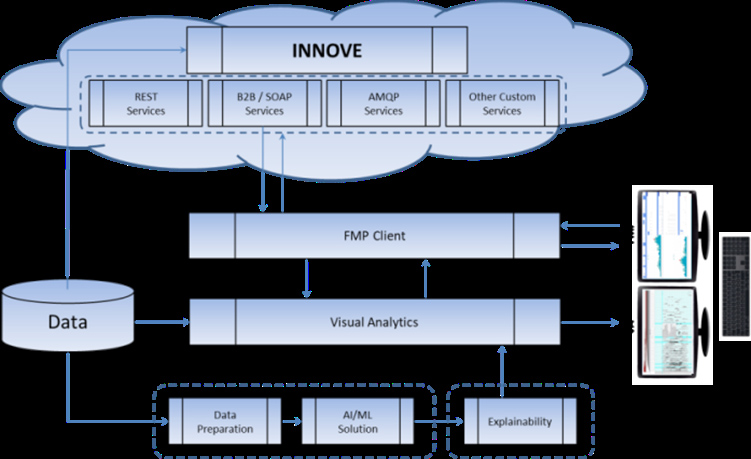Researchers in the SESAR JU project, TAPAS, have completed a series of tests showing how applications built using explainable artificial intelligence can improve trust in humans operating automation-enhanced air traffic management (ATM) systems. The algorithms will be now be adapted further to research AI-based automation support for in other ATM domains.
As industry and research strive to provide more powerful automation support to enhance the capacity and efficiency of air traffic service provision, solutions based on artificial intelligence (AI) are becoming increasingly investigated to support human operators in their daily activity. Using massive amounts of historical data allows researchers to develop powerful new machine learning (ML) solutions which are able to assist in the decision making processes and provide innovative new ways to improve daily operations in the air traffic network.
AI and ML are no longer simply buzzwords, rather they are becoming commonplace in our everyday lives and its potential has not gone unnoticed in the aviation sector, which is developing applications using this exciting technology. But since these applications are often highly complex, with deeply recursive statistical methods forming the core of the learning process, it can be difficult for humans to understand why the AI-enabled application proposes a certain solution and how it reached a particular decision. This is referred to as a black box because the inputs and operations of the AI application are not visible to the human.
Within the AI community, explainable AI (XAI) applications are being investigated to help humans better understand applications and to remove the ‘black-box’ label that is associated with AI.
Through the provision of understandable explanations about the reasoning that has gone into a given set of decisions, XAI helps improve the user experience and to develop trust in the applications or systems as they are being deployed. In the TAPAS project, XAI applications that use deep-queue learning techniques to support demand capacity management for the European ATM network have been combined with visual analytics (VA) support tools and a customised flow management position (FMP) working position to perform real-time, human-in-the-loop validation experiments using the EUROCONTROL INNOVE Network-Management simulation platform to execute ATFCM scenarios at varying levels of automation using the XAI/VA tools.

Integrating the XAI tools with co-located VA and FMP client displays working interactively with the network demand scenarios and B2B/Publish-Subscribe services provided by INNOVE allowed FMP users to perform validation experiments in a highly realistic environment to help determine how the explainability and transparency information could help them to understand how the automated solution were being produced, and why.
Feedback and results obtained helped to confirm that explainability is a key element to develop trust in AI solutions and to promote acceptability in the user community. Following the successful use of the technology in support of demand capacity management functions in the air traffic flow management (ATFCM domain), the algorithms will be now be adapted further to research AI-based automation support for ATC separation management in in the en-route airspace.
The TAPAS project has received funding from the SESAR Joint Undertaking under the European Union's Horizon 2020 research and innovation programme under grant agreement No 892358
